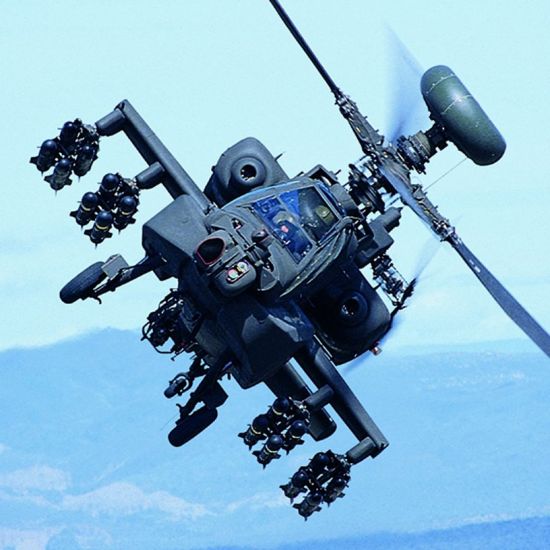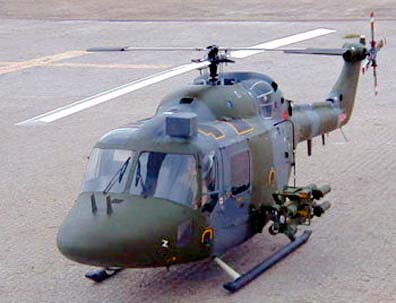Westland Lynx (NO.8)
The Westland Lynx is a British multi-purpose military helicopter designed and built by Westland Helicopters at its factory in Yeovil. Originally intended as a utility craft for both civil and naval usage, military interest led to the development of both battlefield and naval variants, which went into operational usage in 1977 and were later adopted by the armed forces of over a dozen nations, where it primarily serves in the battlefield utility, anti-armour, search and rescue and anti-submarine warfare roles. In 1986 a modified Lynx broke the airspeed record for helicopters, which still stands today. The helicopter is now produced and marketed by AgustaWestland.
Specifications (Super Lynx Series 100)
General characteristics
- Crew: 2 or 3
- Payload: 737 kg
- Length: 15.241 m (50 ft)
- Rotor diameter: 12.80 m (42 ft)
- Height: 3.734 m for mk7; 3.785 m for mk9 (12.25 ft for mk7; 12.41 ft for mk9)
- Disc area: 128.71 m² (1,385 ft²)
- Empty weight: 3,291 kg (7,255 lb)
- Max takeoff weight: 5,330 kg (11,750 lb)
- Powerplant: 2× Rolls-Royce Gem turboshaft, 835 kW (1,120 shp) each
Performance
- Maximum speed: 324 km/h (201 mph)
- Range: 528 km (328 miles) with standard tanks
Armament
- Naval: 2 x torpedoes or 4x Sea Skua missiles or 2 x depth charges.
- Attack: 2 x 20mm cannons, 2 x 70mm rocket pods CRV7, 8 x TOW ATGM[57]
- General: 7.62mm General Purpose Machine Guns (AH.7 and AH.9), Browning AN/M3M .50 calibre heavy machine gun (HAS.3 and HMA.8)



